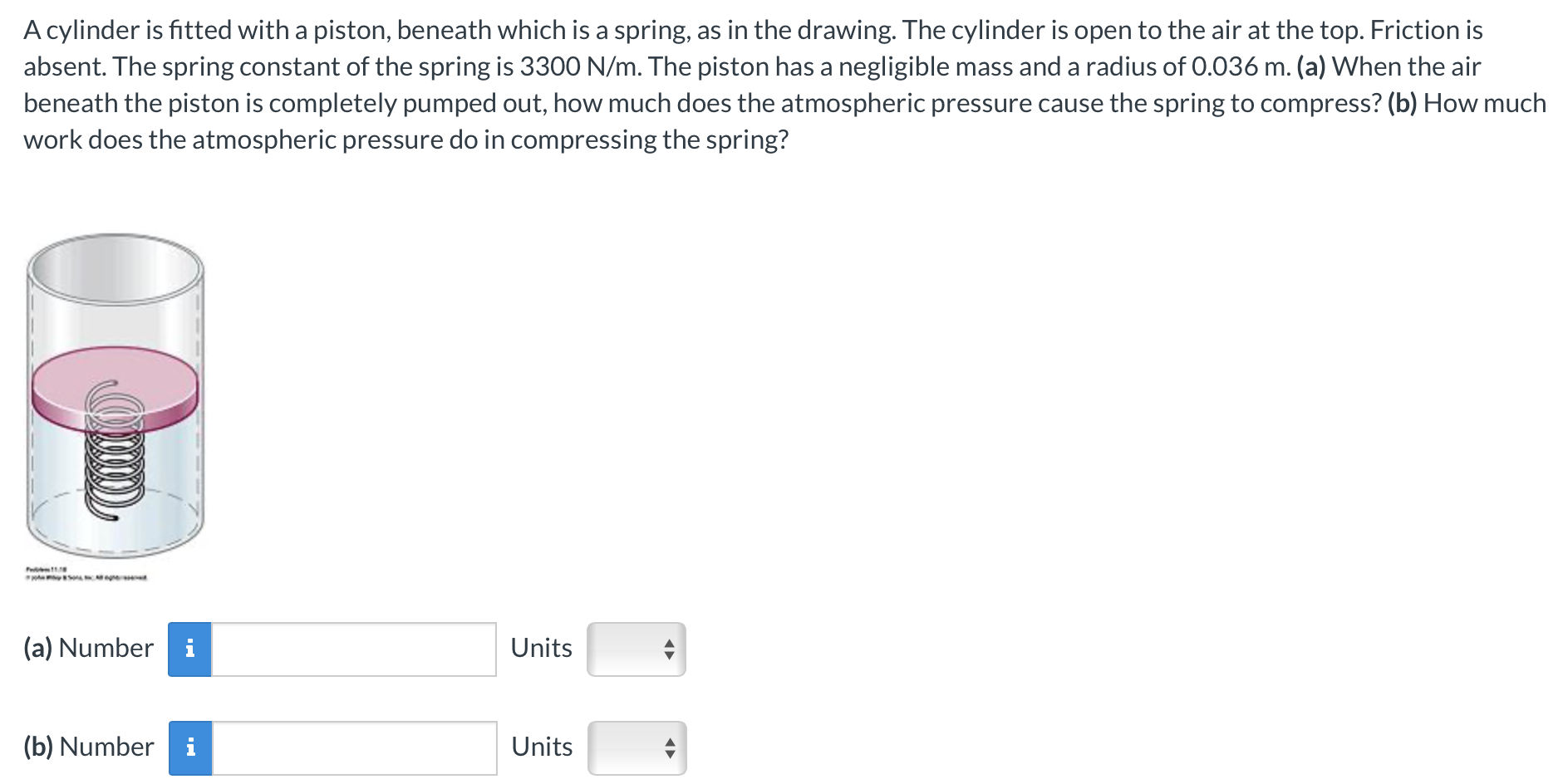A cylinder is fitted with a piston, beneath which is a spring, as in the drawing. The cylinder is open to the air at the top. Friction is absent. The spring constant of the spring is 3300 N/m. The piston has a negligible mass and a radius of 0.036 m. (a) When the air beneath the piston is completely pumped out, how much does the atmospheric pressure cause the spring to compress? (b) How much work does the atmospheric pressure do in compressing the spring? (a) Number Units (b) Number Units



You'll get a detailed, step-by-step and expert verified solution.
 Work With Experts to Reach at Correct Answers
Work With Experts to Reach at Correct Answers